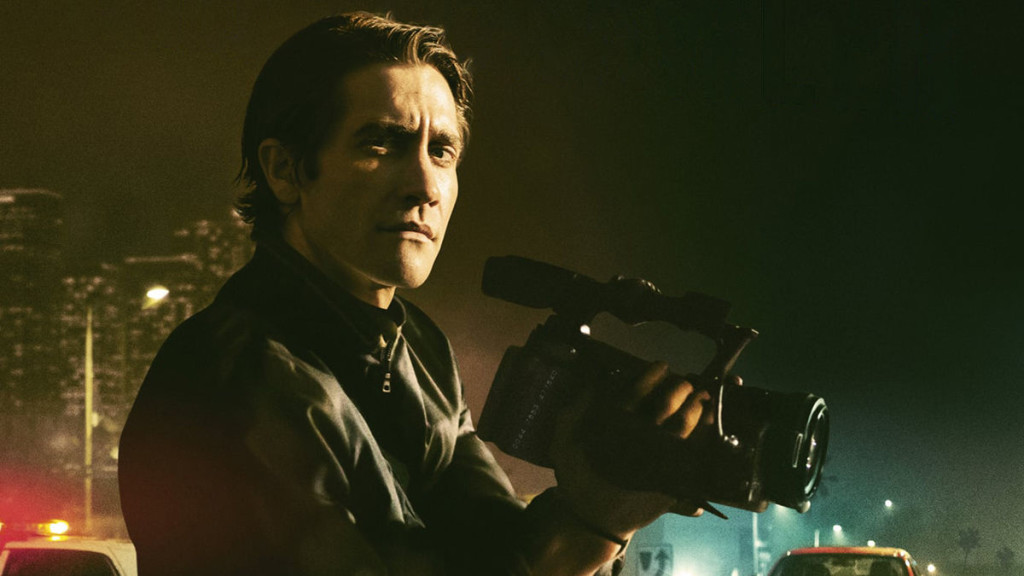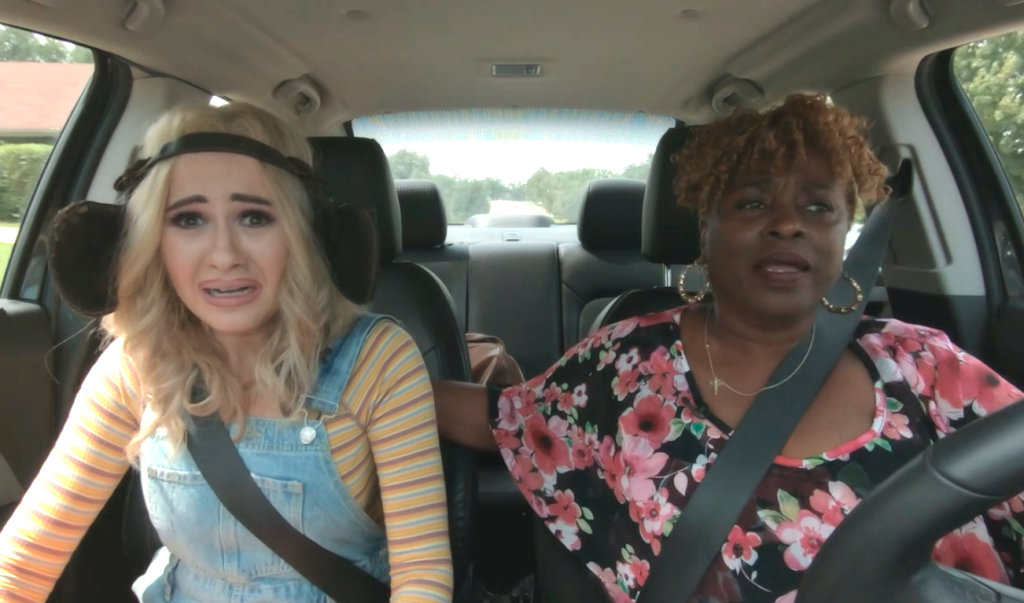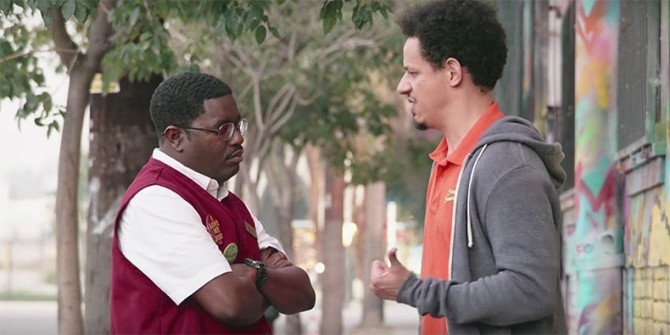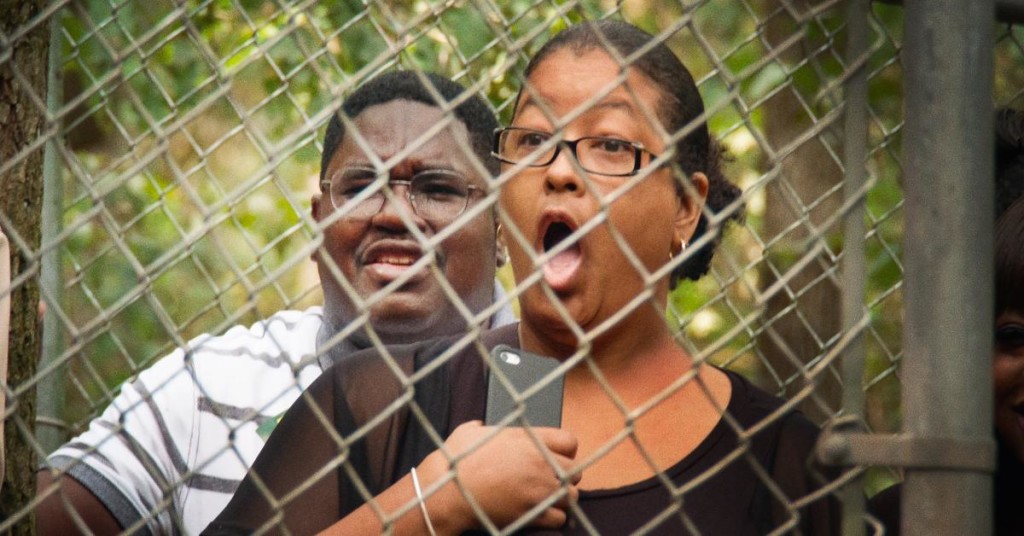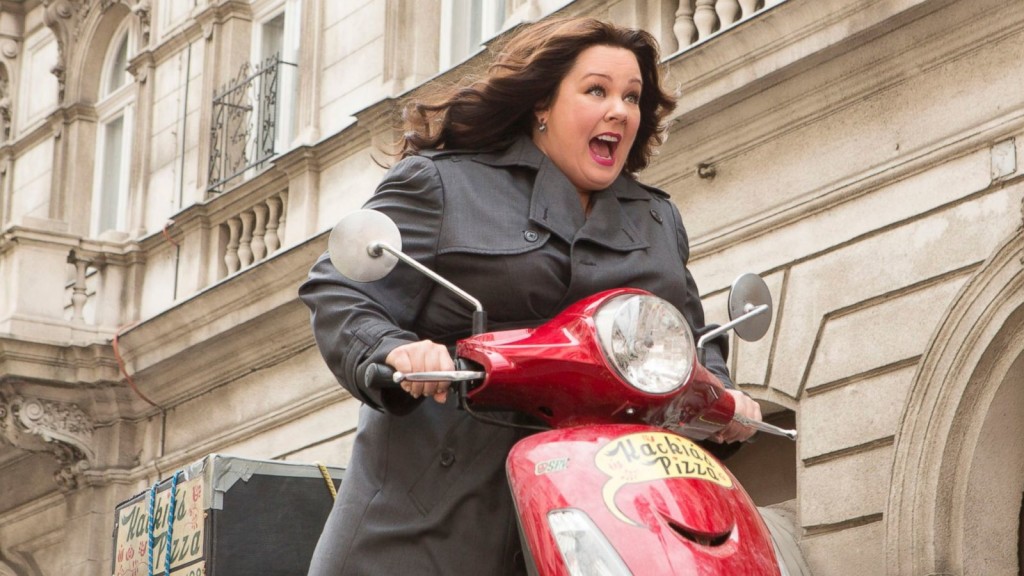Remember the days when you were a young gullible screenwriter and assumed that whoever you sent your script to sat down in front of a warm fire, a glass of expensive red wine by their side, and read your script from start to finish with the determined focus of a surgeon?
Ahhh, those were the days.
Eventually, you learned the truth. That most people who open your script don’t finish it. Sure, people who have been paid to read your script, such as readers doing coverage, will finish it. But the people who actually matter – the producers, the execs, the directors – they’re out the second they’re no longer entertained.
Most screenwriters don’t know that someone finishing your screenplay is a big deal. Even if they only thought the script was okay. The fact that they actually read your script cover to cover is an amazing feat. I still contend that entertaining people with words written on a page is the most difficult form of entertainment to hold someone’s attention.
It sucks that you never know *when* someone gave up on your script. People are generally nice. They don’t want to destroy your dreams. So even if they stopped reading on page 5, they tell you they finished it but it wasn’t for them. And how does that help you? You’re trying to become a better writer yet nobody’s identifying where it is you need to get better.
While I can’t tell you the exact moment readers give up on your script, I can give you the two most likely places. If you can master the writing in these two sections of the screenplay, you will reach your ultimate goal of writing a script that someone reads from beginning to end.
The first of these moments is THE FIRST TEN PAGES.
There is so much going on in the first ten pages from the reader’s side. For starters, they’re seeing if the first scene draws them in. They’re deciding if you can write. Is the writing professional? Is it easy to read? Or is it choppy and clumsily written? They’re deciding if they like you as a writer. Do they like your style? Do they like your voice? I just read a script by a well-known writer that I hated because I hate the writer’s style.
But what the reader is really looking for in those first ten pages is to get lost. I don’t mean that in a bad way. I mean that what you’ve written is so compelling that they forgot about everything else that’s going on in their life and only care about one thing – what the next page holds. That should be every writer’s goal with those first ten pages.
This is why I tell writers to start their script with a mystery or a problem or an objective. All of these require a character to be active. They’re already moving through the story. And if the mystery or problem or objective is interesting, you’ve got us hooked. There’s a reason Raiders of the Lost Ark is considered to be the greatest movie opening of all time. You’ve got this big objective that’s seemingly impossible. And we get to watch this bad-ass motherf&%$#er try to obtain that objective. It immediately thrusts us into a fun entertaining situation.
But that’s not the only option. It can be a scene that plays to your biggest strength. If you’re great with dialogue, for example, drop us into a conflict-filled dialogue scene with 2-4 characters and let the dialogue fly, like the breakup scene in the opening of The Social Network. If you’re truly good with dialogue (and don’t just *think* you’re good with dialogue cause your mother told you so), readers will recognize that and not need a big flashy opening. The crispness of the dialogue will tell us, “This guy has talent. I need to keep reading.”
And don’t take your foot off the gas in those first 10 pages. I’ve read a lot of good teaser scenes that last 4-5 pages and then the writer reverts to clunky character setup and exposition. You don’t have the luxury of doing that. Your script isn’t already greenlit. As unfair as it is, once a script is greenlit, they can take their time in the first 10 pages. But you’re still trying to win people over. So you don’t get vacation time. You have to keep pressing. You have to constantly ask yourself, “Is this moment boring?” If it is, rewrite it until it isn’t.
If you manage to write a great first ten pages, readers will almost certainly give you until the end of the first act. The first act is where the big problem in the movie is set up (save the princess, get into the exclusive party, retrieve the infinity stones) and the beginning of the second act is where the characters set off on their journey. That stuff is inherently structured and usually fun to read.
This brings us to the second most common place a reader gives up on your script, which is 10-15 pages into your second act. The reason for this is that most writers know how to set up a story. But very few know how to tell the middle act of a story. They don’t have a plan. This becomes evident almost immediately. The goal isn’t clear. The characters seem unsure. The direction from the writer, if there is any, is vague. It just feels like they’re making things up as they go along (probably because they are).
And the threshold for how long a reader will put up with that is about 15 pages. Personally, I’ve seen so many scripts fall apart at this stage. You can almost read the writer’s mind. You can see the lack of confidence building with each subsequent scene.
The trick to getting this section right is, first, understanding what the second act is. It’s the obstacle act. Your hero will be pursuing something – the ultimate goal in the movie – and you will then throw a bunch of obstacles at them. Sometimes these obstacles will be overcome. Other times they will set your hero back. If, at any point, you let your foot off the gas with either of these (character no longer pursues goal, interesting obstacles stop appearing or don’t appear frequently enough), you will start to lose the reader’s interest.
In the movie Nightcrawler (one of my favorite screenplays ever), the ’15 minutes into the second act’ marker has Louis Bloom getting to a crime scene too late because his newly hired assistant, Richard, accidentally sent him the wrong way. It’s an obstacle he did not overcome. He gets right back on the horse, speeding 90 miles an hour through the streets of Los Angeles to get to the next crime scene where he’s able to get some gruesome footage that he sells to the local news.
He then parlays that into a meeting with the station’s news producer. He wants to set terms for future deals.
Louis Bloom’s determination – his goal to become the number one nightcrawler in the city – creates a narrative where, when we reach 15 minutes into the second act, he’s going to be doing something. And readers LOVE THAT. They love when the main character is ACTIVE and DETERMINED and will do anything to achieve their objective.
Conversely, in Gilroy’s and Gylenhaal’s next collaboration, Velvet Buzzsaw, if you fast forward to 15 minutes into the second act, you see Gylenhaal’s art critic character lazily waltzing through an art showing, chatting up others at the gallery. It feels random. Not to mention, the story hasn’t established which direction it plans to take. You take Gilroy’s name off of this script, I guarantee you no one makes it past page 45. Such is the importance of establishing a direction by the writer and a purpose for the main character.
If you can get this section right, I’ve found that most readers will read the rest of your script. If they make it to page 45 and they’re still into the story, they’ve decided your script is worth their time. So pay extra attention to these two sections of the script. When they’re good, it usually means the entire script is good. Good luck!
P.S. Look for a new SCRIPTSHADOW NEWSLETTER in your Inboxes Friday night!!! Update on Kinetic! Yayyyyyy!
Genre: War/True Story
Premise: Chronicles the clandestine CIA operation that risked igniting WWIII by recovering a nuclear-armed Soviet Sub, the K-129, that sunk to the bottom of the ocean in 1968.
About: Scott Free Films (Ridley Scott’s company) bought the rights to the David H. Sharp book “The CIA’s Greatest Covert Operation: Inside the Daring Mission to Recover a Nuclear-Armed Soviet Sub” three years ago, presumably for Scott to direct. Scott Free hired a relatively unknown writer, Dave Collard (Annapolis), to adapt the book. That ended up being the right decision, as the script finished 3rd on last year’s Black List.
Writer: Dave Collard (based on the book by David H. Sharp)
Details: 123 pages
When you ask people what the number 1 rule in screenwriting is, they’ll probably tell you it’s “Show don’t tell.” Or “Make your protagonist likable.” Or “Don’t write a scene unless it pushes the story forward.”
They’re all wrong.
Anyone who’s been reading Scriptshadow for a significant amount of time knows the real number 1 rule in screenwriting: DON’T WRITE ABOUT THE COLD WAR. There has never been a movie about the Cold War that’s done well at the box office. It turns out that when you write about a war where there was no actual fighting, people aren’t that interested. Who would’ve thought?
Which is why I haven’t read Neither Confirm Nor Deny until now.
However, the lackluster offerings I’ve been seeing near the bottom of the Black List aren’t panning out. I figured if this script got 26 votes and finished in the Top 5, it might be good. So I’m giving it a shot! Even if that’s one more shot than was ever fired during the Cold War.
It’s 1968 and the Russians have just lost one of their nuclear submarines. This at a point in history where nuclear subs were redefining the potential to win a nuclear war. No longer would sides have to wait ten endless minutes for their missiles to sail across the sea and destroy a city. Now they could park themselves off a nearby coast and strike within seconds.
Somehow, the US Navy finds the missing Russian submarine at the bottom of the Pacific. This gives CIA Assistant Deputy Director John Parangosky an idea. What if we could capture it!? A simple question that has a complex answer. Nobody’s ever tried to pick up a dead submarine off the ocean floor before in one piece, while, at the same time, hiding it from the entire world. This won’t be easy.
So “JP” calls upon the smartest engineer he knows, Dave Sharp, to create the device that’s going to capture the sub. And then he goes to fellow brainiac, and alcoholic, John Graham, who runs an ocean mining business. He wants John to design a plan to scoop this thing up.
What the crew quickly realize is that this task is impossible. They can’t use any current Navy ships as they’re not equipped to lift that kind of weight. They will have to design a totally new ship. The budget blows up to 375 million dollars, the CIA’s ENTIRE YEARLY BUDGET. And in order to explain why a weird ship is parked out in the general vicinity from where a Russian sub disappeared a couple of years ago, they have to hire eccentric Howard Hughes to pretend he’s digging for rare ocean minerals in the area.
All of this takes a lot longer than anybody planned for. They first spot the sub in 1968. They don’t get to the point where they consider pulling it up until 1974. They want to test the equipment even longer but when the press gets wind of the mission, it’s only a matter of time before the gig is up. Therefore, they have to do it! Will they succeed and save America? Seeing as I’m here typing this, I’m guessing yes. But wouldn’t it be one hell of a twist if the whole mission, instead, started World War 3?
Neither Confirm Nor Deny is going to be a hit for people who liked The Imitation Game and Argo. It’s very much in that same vein where we follow a bunch of government folks trying to pull off an impossible task, but the writer never takes the world too seriously. There’s a big emphasis on creating “Characters” with a capital “C.” You can tell that just from the way people are introduced.
“JOHN GRAHAM (50s) walks into his office, clutching a cigarette in one hand, a coffee in the other. A one-two punch that he’s perfected so well that he can drink the coffee without removing the cigarette.”
Neither Confirm Nor Deny revels in the fact that it gets to include wackadoodles like Howard Hughes, and I have to say I’m a much bigger fan of that approach than the super-serious approach. These backroom government bureaucracy flicks can feel self-important if you don’t have a sense of humor about things. That’s the vibe I got from this. It never let things linger too long without a laugh.
Secretary: Now I got a question for you– how come you never come out and play volleyball with everyone?
Dave: Because I’m here to work.
Secretary: Even God took off one day.
Dave: Yeah, well, he wasn’t trying to raise a Russian sub that’s three miles down.
That approach alone makes this script worth the read.
But, ultimately, what prevents this script from reaching impressive territory is the sheer amount of time the team has to complete their task. Hollywood movies need urgency. We need to feel like things must happen now or else we start wondering why we’re watching. If you have all the time in the world to get the job done, then I can go home and be reasonably certain you’ll get it done. If, however, you tell me it can only be done RIGHT NOW or else the whole thing blows up, I have to stick around to see what happens.
You can trick audiences for a while when it comes to lack of urgency. It requires being vague and cutting to each scene without telling us that four weeks have just passed, or two months have passed. It feels seamless because you’re not drawing attention to the time jumps. Another Ridley Scott movie, The Martian, does this well. You don’t realize that the time is passing on Mars as much as it is.
However, if you try and extend the timeline out too long, the audience becomes hip to your misdirect. I mean, we started this adventure in 1968. It’s now 1974. How important can capturing this piece of equipment be if we’ve waited six entire years and nothing in the Cold War has changed? And haven’t they built new cooler more sophisticated subs by now? It’d be like me trying to backwards engineer an iPod but by the time I was finished, they were on the iPhone 12. Big deal.
This is part of my broader problem with the Cold War as a script backdrop. It doesn’t provide high enough stakes. I remember reading The Imitation Game and, at one point, I think they said that for every day they didn’t figure out the Enigma machine, 100,000 more people were killed. Those are what I call “stakes.” That is what I call urgency.
To be clear, this is an enjoyable script. But it never convinced me that capturing this submarine meant anything in the broader scheme of the Cold War. It was just a fun side-quest for the CIA. But, for what it’s worth, it did introduce the phrase, “We can neither confirm nor deny “ into popular culture. So there’s that.
[ ] What the hell did I just read?
[ ] wasn’t for me
[x] worth the read
[ ] impressive
[ ] genius
What I learned: “The bad guys are getting close.” In my favorite new movie, Bad Trip, we constantly cut away from our heroes’ journey to show Bud’s psychopathic sister getting closer and closer to catching up to them. They’ve stolen her car and she’s going to make them pay. This common screenplay device is a nice way to add urgency to a narrative. If we see the enemy getting closer, we know our heroes have to hurry up. Neither Confirm Nor Deny should’ve used this device. There should’ve been a subplot where we intermittently cut to the Russians, who are getting suspicious about the Americans’ activity at sea. The more we see the Russians getting close to figuring out the Americans’ plan, the more urgency it would’ve added to the objective.
Week 0 (concept)
Week 1 (outline)
Week 2 (first act)
Week 3 (first half of second act)
Week 4 (second half second act)
Week 5 (third act)
Week 6 (Evaluate your first draft)
A PLAN OF ATTACK
This week, you will lay out a rewrite-targeted outline.
The key to any good rewrite is A PLAN OF ATTACK.
The more specific your plan of attack is, the more effective your rewrite will be.
Last week, I asked you to read your script and identify the five key areas where your script needed to improve. Common first draft problems include a slow plot, inconsistent characters, a large page count, a small page count, scenes that don’t push the story forward, abandoned subplots, setups without payoffs, payoffs without setups, generic characters, cliche choices, low stakes, and low urgency, to name a few.
Also, with comedies, there is such a strong desire to “write funny” that first drafts have a lot of comedy situations that have nothing to do with the story. You can get away with a couple of these if they’re ABSOLUTELY HILARIOUS (the zoo scene in Bad Trip comes to mind). But you definitely want your plot driving the characters’ actions.
When reading interviews for Borat 2, the director talked about this extremely funny scene between Borat and the barber. But the comedy was random and had nothing to do with the overall plot of the movie so they had to get rid of it. That should tell you something. If they’re not including funny bits from a Borat movie due to plot, you don’t get special privileges for your script.
One of the most common changes from first to second drafts is speeding up the plot.
What often happens in a first draft is you follow your funny bone more than you follow the plot. If you’re writing a comedy called “First Date” about a couple on their first date, you might get a funny idea 30 pages in to have the couple bump into the guy’s crazy ex-girlfriend, who freaks out when she sees him on a date with another girl and tries to beat her up. That unplanned scene could add five extra pages to the script.
You might get another idea later where they’re driving to the next destination and get mistaken for an Uber and have to take a pissed off married couple across town. This couple can’t stop complaining about how marriage sucks and it’s pointless to ever get in a relationship, seeding the idea that this first date is pointless to our heroes. That adds another five pages.
For this reason, you end up hitting all your major plot points late. This pushes EVERYTHING in your script back too far, which creates a slow-moving plot. Now to you it’s not slow. It never feels slow to the writer because the writer assumes that everything they write is amazing and is therefore riveting to read. But trust me. The reader is bored. So you have to move your plot points up in the second draft. In fact, I cannot tell you how many times I’ve seen someone take their “lowest point” break into the third act and move it up to the midpoint.
Comedies tend to be funnier when your characters are trying to accomplish things – when they’re moving forward to the next goal that gets them closer to achieving their ultimate objective.
This is why road trip comedies work so well. We can physically see our characters getting closer to their ultimate destination. But the point is, you should be evaluating all your major plot points and asking, “Can I move this up in the script?” The closer your plot points are together, the faster the script tends to read.
If you’re writing the First Date movie and the characters go 60 pages without any interruptions or major things getting in the way of their date (zero plot points), chances are the reader is bored. Keep the story moving. Keep the story moving. Keep the story moving.
THE REWRITE OUTLINE
Here’s what I want you to do.
I want you to open up a new document and at the top of the document, I want you to write the 3-10 most important OVERALL notes you want to implement in the rewrite. These are not page or scene specific, but rather stuff that will come up over and over again.
For example, an ‘overall’ note might be: “Make sure MAIN CHARACTER is more active!” In the last draft, he was passive or reactive. And this time around you want to make sure his eyes remain on the prize. You want him to be more involved in pushing the story forward. Another might be, “Add more obstacles!” In the previous draft, there weren’t nearly enough obstacles getting in the way of their date. You want to change that. Make the date even MORE difficult. (“MORE,” “BIGGER” and “FASTER” are common themes when trying to improve a script)
After you’ve done that, you’re going to split your outline into 8 SEQUENCES. SEQUENCE 1 is pages 1-12. SEQUENCE 2 is 13-25. SEQUENCE 3 is 26-38. SEQUENCE 4 is 39-50. SEQUENCE 5 is 51-62. SEQUENCE 6 is 63-75. SEQUENCE 7 is 76-88. SEQUENCE 8 is 89-100.
If you want to write a 110 page comedy, add 1 page to each sequence.
What we’re trying to do here is take that big unruly mess of a vomit draft and shape it into something more focused. I find it’s helpful to name each sequence so that it has a theme. And then, underneath that, write down all of your notes for what you’re trying to achieve in that sequence. It’s up to you how specific you want to get. You can construct big hierarchal mini-outlines under each paragraph or just write a few sentences for what you’re trying to achieve.
Here’s how this might look for our fictional script, “FIRST DATE”
SEQUENCE 1 (PAGES 1-12) – “MISCOMMUNICATION”
– Let’s intercut back and forth to both of them getting ready instead of showing her entire routine then his entire routine.
– Might be funny to play with expectations here. Doug should be the one who takes forever and Claire is the one who’s ready in five minutes.
– Get rid of Doug’s annoying roommate. Wasn’t funny.
– Better establish that Doug is broke.
– This time, when Doug gets to the restaurant and calls Claire to see where she is, don’t have Claire be so angry. The anger from both sides needs to build over the course of the night. If we start Claire at an 11, we have nowhere to go with her. So Claire will be more jokey about it. “Didn’t you forget something?” “What?” “That in order to have a date, you need to pick the date up?”
– It will be an ongoing debate throughout the night on whether they agreed to meet at the restaurant or Doug was supposed to pick her up.
SEQUENCE 2 (PAGES 13-25) – “RUNS OUT OF GAS”
– Instead of Doug running out of gas in a sketchy part of town, which has been done before, have him run out of gas on the freeway and get stuck on the left shoulder, where it’s impossible to escape.
– When he calls Claire and lies about where he is, we should keep hearing her ex in the background. Remember, in this draft, she’s still living with her ex, who Doug thinks is still in love with her. So we have to keep that thread present.
– He’ll get a call from the AAA truck when it’s close that they have to cancel cause they ran out of gas.
– Doug will try to call an Uber to pick him up on the freeway. Begs the driver when he refuses. Finally relents when Doug offers a big tip (which is all the money he has – he doesn’t know how he’s going to pay for dinner now).
– Claire very confused when Doug picks her up in an Uber.
And so on and so forth. The reason the sequence approach works so well is that it keeps the plot moving. You know that every 12 pages, you need a new development in the story. That ensures that the story is constantly moving and changing.
Now because this is just the second draft, you still have permission to follow new ideas while you’re writing. If you come up with a hilarious scene idea 50 pages in and it doesn’t quite fit into the story, include it anyway. We can figure out how to make it work in the next pass. However, if it’s not a hilarious idea. If it’s one of those, “This might be funny” ideas, ignore it. You need to start shaping your story so that it moves quickly. Even the funniest writers can lose the reader with a wandering plot. We need to give the reader a strong sense that the story is headed somewhere and is not a collection of disjointed jokes.
We’re going to be moving through this draft a lot faster than we were the first draft. So you need a strong plan going in. The less specific you are about the changes that need to be made, the longer and more frustrating your rewrite will be. You have one week to get this outline done and, starting next Monday, we begin the second draft!
Until then… :)
When I was looking for examples from funny comedies for my Thursday article, I nearly broke out in hives. As I searched high and low, I couldn’t find any movies that I felt were genuinely funny all the way through. I started to wonder if I’d outgrown comedy features altogether. Comedies are made for the 12-25 crowd. I’m not that.
Then I watched Bad Trip.
And I could not stop laughing.
It wasn’t just how funny the movie was. It was how *inventive* it was. I’ve never seen a movie quite like it.
Bad Trip is basically a re-make of Dumb and Dumber. A Florida car wash employee, Chris, runs into his high school crush, Maria, while on the job. After getting the courage to talk to her, he learns she’s only in town for the day and is heading back to New York, where she works as an art curator.
The impulsive Chris tells his best friend, the wimpy and introverted, Bud, that he wants to go to New York, tell Maria he loves her, and hopefully live happily ever after. Bud is reluctant at first but agrees to join him. They go on a road trip to New York and hilarity ensues!
Sounds pretty basic, right?
Well, here’s the catch.
The spine of the movie is a fictional narrative but all of the set pieces are prank scenes. The best way to explain it is you know the scene in Dumb and Dumber where Lloyd and Harry stop at the diner and piss off Sea Bass? Imagine if, in that scene, Jim Carey and Jeff Daniels walked into a real diner with real people who had no idea they were in a movie, and pissed off a real Sea Bass?
That’s Bad Trip. It’s a real movie narrative mixed with a bunch of scenes where the people surrounding our heroes have no idea they’re in a movie. I’ve never seen that before.
Now some of you may say, “Uh, Carson. Have you not seen Borat?” It’s hard to explain but Bad Trip is nothing like Borat. Borat’s schtick is finding real people and making them admit they’re racist or sexist or something. It usually revolves around one person, with him occasionally doing a performance scene, like a concert or a wrestling match.
In Bad Trip, almost all of the prank scenes involve multiple onlookers. For example, the two friends get in an elaborate car crash and a dozen clueless [real people] come to their rescue, none the wiser. And they’re all seamlessly (for the most part) woven into the narrative. It’s a thing of beauty.
The genius of the comedy is that Eric Andre, who plays Chris, is willing to take the comedy as far as it can go. Then we get to watch a bunch of real people react to it. For example, early on in the movie, while at the mall, Chris decides he’s going to travel north to see Maria and is so excited he starts a random dance number right there in the food court. As other actors join into the choreographed dance, the looks on the real mall-goers’ faces are priceless. They genuinely have no effing idea what’s going on.
So why haven’t you heard of this movie?
I’ll tell you exactly why.
Because it’s not politicized.
It follows two black men who head up north and not a single gag they’re involved in is race-related. In fact, there’s a scene where they stop at a big redneck bar where they’re the only two black people there, and the bulk of the scene shows how well everyone gets along with each other. You can’t have white people and black people happily getting along in a 2021 movie.
That’s what really won me over about Eric Andre’s comedy. All he cares about is making you laugh. And he doesn’t do it at the expense of anyone. Imagine a Borat movie where Sascha Baron Cohen wasn’t allowed to make anyone look bad. There wouldn’t be a Borat. Yet, in Bad Trip, every single scene is about Eric and Lil Rel Howery being the butt of the joke. There’s not a single scene where a random person is the butt of the joke. Not only do I respect that. But that’s much harder to do.
The question I was asking myself was, what can comedy writers learn from this movie? I struggled with that because it’s such a unique film. But I did have a couple of takeaways.
First, there’s value in trying something different. What made this movie so fascinating was how different it felt from every other comedy film. You’re trained to think that everything has been done already. But this is a reminder that it hasn’t. You have to think that with new things popping up on the internet every day, there is still opportunity for you to come up with the next unique comedy concept. I mean, has anyone made a Zoom comedy yet? Seems like a slam dunk with the right concept. And hey, you still have a month and a half before the Comedy Showdown deadline. So maybe start writing that Zoom comedy now!
The second thing I learned was more traditional. And that is, when it comes to comedy, you want to take the reader right up to the edge…. You want to make them think that you’re finished… and then you want to go past it.
One of the biggest laughs in the movie occurs when Chris and Bud go to the zoo. While a tour of real people are watching the exhibits, Chris notes to Bud that the gorilla exhibit door has been left open. Since the silverback gorilla is currently asleep, Chris sneaks in to get a daring selfie with it.
The people then watch in horror as the [unknowingly fake] gorilla awakens and attacks Chris in… well, let’s just say it attacks him in sexual way. It’s both hilarious and way too much at the same time. Chris is able to escape the gorilla and barely get back through the gate door. The zoo-goers are besides themselves, happy that Chris narrowly escaped death but also mortified at what they just saw. Legitimately, there are a couple of people who are traumatized.
As zoo employees are called and everyone’s asking Chris if he’s okay, Chris realizes that he dropped his cell phone in the exhibit. So he GOES BACK IN TO GET IT. Everyone’s trying to stop him but Chris has to get his phone. And, of course, when the gorilla sees him again, he attacks Chris a second time in an even more mortifying way.
Take them right up to the edge, make them think you’re done, then go past it.
Speaking of edges, it looks like the Oscars have finally plummeted over the edge and into the abyss. There has never been an Oscars with this many movies that nobody has seen. I am not exaggerating when I say that some of these movies haven’t been seen by more than 1000 people. Yet they represent our industry’s best! Wooo!!! Here are my quick thoughts on every major movie on the list…
Sound of Metal – I tried SO HARD to watch this movie over the weekend just so I could say I watched one Oscar movie. No scenes. Just a bunch of scene fragments. Typical indie randomness. Starts off being about a deaf drummer then it becomes about addiction. So it’s a movie about deafness or a movie about addiction? So confused. Gave up after 40 minutes.
Mank – Quite possibly the most rambling incoherent film in the Oscar race. And that’s saying something.
Minari – Whenever I see a poster with a group of depressed people in a field, I know there’s a 180% chance I’m not going to like the movie. Didn’t see this. Don’t plan to. Nobody can convince me it’s good.
The Trial of The Chicago Seven – I mean, Sorkin wrote it so it probably has some good moments. But this subject matter doesn’t interest me. Not going to watch it.
Ma Rainey’s Black Bottom – I’m as interested in 1920s blues singers as I am a group of depressed people in a field. Not sure if I would’ve seen this if it was the only movie released all year.
Nomadland – I’m convinced this movie was created to make the world a more depressing place. I mean come on. How do movies like this get made? Seriously.
Promising Young Woman – Read the script a couple of years ago. Gave it an “impressive.” Director looks like they made the script even better. As far as I’m concerned, this is the only movie on the 2021 Oscar list that looks like it deserves to be there.
By the way, where’s I Care A Lot??? That movie was a thousand times better than any movie on this list. If you’re pushing me for writing winners, I’m guessing Nomadland wins for Adapted Screenplay only because no one’s giving a goofy comedy (Borat) an Oscar. And Nomadland has gotten a bigger marketing campaign than any other movie on the list, which means more voters will have actually heard of it. Not the best way to win best writing but you take what you can get. Promising Young Woman will win for Original Screenplay. I know Sorkin’s in that category but unless he can figure out a way to be female between now and 5pm, he’s probably not going to win. Oh, and finally, the one and only movie I actually want to win an Oscar tonight: MY OCTOPUS TEACHER!!! Go octopuses!
Today, I want to bring you back to one of the defining characters in cinema history. He was introduced to the world on May 19, 1999.
His name?
Jar-Jar Binks.
Jar-Jar Binks was the brainchild of George Lucas. And while you wouldn’t know it today, he was supposed to be the most important character in the prequel trilogy. He would start out as the comedic relief in Phantom Menace before becoming a wise master in Revenge of the Sith.
That never happened because the world revolted against him. But I’m not concerned about Jar-Jar’s fate in today’s post. I’m focused on how Lucas made a critical comedy mistake when constructing this character. A mistake that ensured he would not be the comedic relief he was meant to be. Want to know what this mistake was?
GEORGE LUCAS ACTIVELY TRIED TO MAKE JAR-JAR FUNNY.
Now we’re going to get into a trippy thought-provoking topic today so stay with me because it’s admittedly confusing but here’s the premise of the post: The act of trying to make something funny is what makes it unfunny.
You’ve probably met that person at the party who’s desperately trying to make everybody laugh. And, yet, the more he tries, the less funny he becomes. Why is that?
Well, when somebody is actively seeking validation from you through laughter, it creates a “try-hard” vibe that dilutes the humor. It becomes more about them getting you to laugh than you actually laughing.
That’s the vibe Jar-Jar Binks gives out whenever he’s in a scene. He is not interested in talking to Ani. He’s not interested in figuring out how to outwit Watto. He’s not concerned about how they’re going to get off this desert planet. Jar-Jar Binks is only there to stand in front of all of the other characters, look directly into the camera, and make you, the audience laugh.
He is the ultimate embodiment of a try-hard comedic character.
For comparison’s sake, let’s take a look at an earlier comedic character of Lucas’s, Yoda. Yoda is hilarious. He gets in a fight with R2-D2, whacking his cane against him. He makes a bunch of jokes that only he thinks are funny and he doesn’t care if you agree or not. He has this weird way of talking backwards. He orders this giant human around. He steals food.
Yoda doesn’t care if the audience laughs or not. He is existing inside the reality of the movie, which is why what he does is so funny.
This leads me to the three cornerstones of writing a good comedy script. They are the concept, the characters, and the scenes. However, it is how you approach these three cornerstones that decides whether your movie will be funny or not.
You are not trying to come up with a funny movie idea. You are trying to come up with a movie idea that will provide the opportunity for comedy. You are not trying to come up with funny characters. You are trying to come up with characters whose personas lead to organically funny actions. You should never try to write a “funny scene.” You should construct scenes that best open up the opportunities for funny moments.
Let’s go through these one at a time.
When coming up with a concept, you’re looking for a giant situation that creates the most opportunity for comedy. Wedding Crashers. That’s a concept that, in the title alone, you can start to see the opportunity for a bunch of funny scenes. And they come to you organically. You don’t have to force anything to find them.
Same thing with Night at the Museum. You get stuck in a museum overnight where everything inside the idea comes to life. So many funny scenes are going to come from that premise without you even having to try.
Conversely, look at the Adam Sandler comedy, Hubie Halloween. That movie is about a weirdo who stumbles around his town on Halloween night. It is the definition of “try-hard.” There’s no clear concept where you can imagine funny scenarios. It is solely about a character TRYING TO BE FUNNY on an unusual night of the year. Even before the movie has started, we get the sense that characters will be desperately attempting to make us laugh, just like the unfunny guy at the party.
This extends into character-creation as well.
You don’t want to be in the headspace of, “I need to make this character really funny.” That thought-process is what creates the problem. You’re going to bypass the movie and directly focus on making the audience laugh. Which is when they never laugh. It’s the Jar-Jar Binks effect.
Instead, create characters who provide the potential for being funny within the situations they’re in. Annie (Kristin Wiig) in Bridesmaids is this really jealous person. That’s the core of her character. It’s not, “Wacky Girl.” It’s “Jealous Girl.” Then, all the movie has to do is put Annie in a bunch of situations that expose her jealously.
Like a pretty teenager coming to buy a necklace at the jewelry store Annie works at. She’s excited about hanging out with her best friend later. Annie, meanwhile, has lost her best friend to this other chick who’s fast replacing her. So Annie starts making nasty quips to the teenager about how friendships never last, which devolves into insult-hurling, until Annie finally calls the customer the c-word.
It’s a really funny scene. But I never got the sense that the character was trying to make me laugh. All of her humor came via the insecurity she harbored due to her jealousy.
Finally, you want to extend this to your scene-writing. You should never try to write a “funny scene.” You should, instead, come up with a scene that provides you with the most potential for funny moments.
If you’re writing a golf comedy, for example, you want to look for unique scenarios that mine the best opportunities for laughs. So you put the angriest golfer in the world in a mini-golf course. Or you put him in a celebrity pair-up tournament. Without me even having to explain these scenes, you’re already thinking up funny moments.
All of this seems obvious after-the-fact. But I’m the one who has to read all the amateur comedies where the writers don’t think of this stuff. They don’t think of forcing Happy Gilmore to learn how to putt on a mini-golf course. They focus on the golf tournaments and love story only and their comedy ends up being bland.
When you do all this right, it comes together in a beautiful way and leads to lots of funny scenarios. For example, the movie, “Spy.” That movie is about an introverted CIA desk agent who must become a field agent for the first time. That idea creates a bunch of funny scenarios. The main character is going to be funny just through the sheer act of trying to learn the practice of spying on the job. And there are going to be plenty of scenarios that offer potentially funny outcomes. Just having to sit down with an international kingpin during lunch and convince her that you’re a regular person — that offers plenty of opportunities for jokes.
Finally, I’m the first to admit that the rules of comedy are complicated. We often laugh at things we’re not supposed to laugh at. Or didn’t think we’d laugh at. There are times, such as in “Ace Ventura, Pet Detective,” where the main character is clearly interested in making the audience laugh, and it still works. So I’m not saying that this is only way to write comedy.
What I am saying is this formula gives you the best chance of writing a good comedy script. Even if you can only get two out of the three in there, you still have a good chance of writing a good comedy. In the meantime, if you catch yourself writing lines, characters, or scenes in a desperate attempt to make people laugh, I can guarantee you that’s when your comedy isn’t going to work. And if you ever need a reminder of why, pop in every scene of Jar-Jar Binks in The Phantom Menace. He’ll remind you. :)

